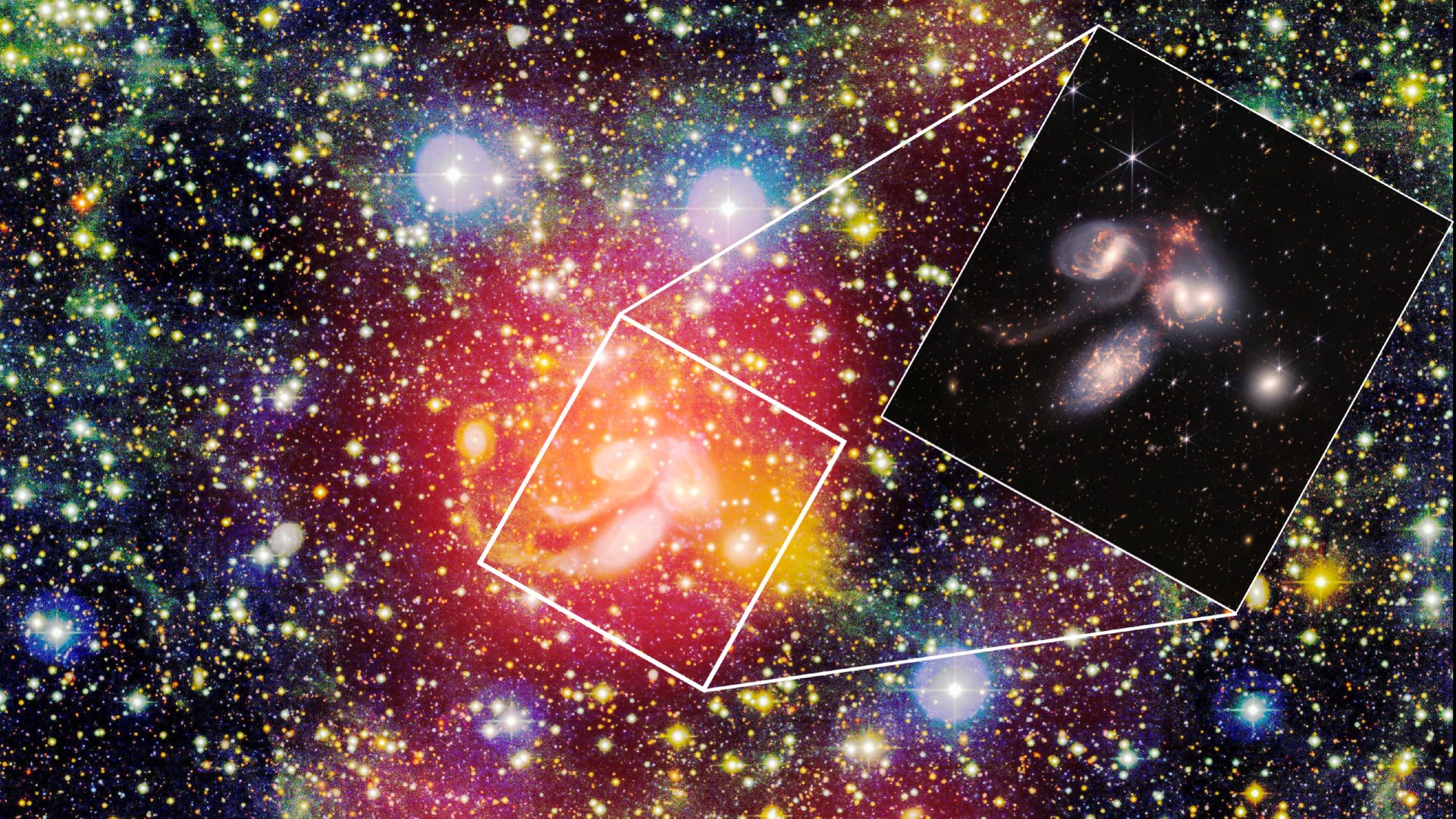Scientists discover largest gas cloud in space that's 20 times bigger than the Milky Way
Glowing in the Pegasus constellation are five apparently closely packed galaxies known as Stephan's Quintet, whispering the secrets of galactic evolution to scientists.

Glowing in the Pegasus constellation are five apparently closely packed galaxies known as Stephan's Quintet — and they are whispering the secrets of galactic evolution to scientists.
Like all galaxies, these orbs started out as masses of atomic gas that clumped together and eventually collapsed in on themselves, forming what would become the stars that light them up. Each galaxy is made of millions of star clusters; four are actually interacting while one stands apart much closer to Earth.
Now, an international team of researchers using the Five-hundred-meter Aperture Spherical Telescope (FAST) in China, has found that Stephan's Quintet is shrouded in an atomic gas cloud 2 million light-years wide, or about 20 times the size of the Milky Way "This is the largest atomic gas structure ever found around a galaxy group," Xu Cong, an astronomer at the National Astronomical Observatories of the Chinese Academy of Sciences and lead author on the new research, said in a statement.
Related: Behold! The James Webb Space Telescope's stunning 1st science images are here.
The discovery presents a mystery and will require astronomers to rethink how gas behaves at the edges of galaxy groups, according to the researchers.
Because atomic hydrogen is more free to float through galaxies than other components of an atomic gas cloud, it scatters easily when objects in a galaxy interact with each other. The scattered hydrogen in Stephan's Quintet is a time capsule that can tell scientists about such events going back perhaps about a billion years.
The cloud is a particularly surprising find because astronomers would have expected ultraviolet light to change the nature of the hydrogen in the cloud. Ultraviolet light ionizes the atoms in an atomic gas cloud will ionize, meaning they will gain or lose electrons and end up charged. But the gas observed in Stephan's Quintet is not ionized.
Breaking space news, the latest updates on rocket launches, skywatching events and more!
The lack of ionization suggests that the gas could be left over from galactic formation. Far away from any stars, diffuse clouds of atomic hydrogen still exist on their own, which could make a case for them being by-products of interactions that formed a galaxy. It is also possible that the cloud surrounding Stephan's Quintet could have been released by an ancient crash between two of the galaxies.
Although the explanation for the unionized gas still remains unknown, an answer could change what we think we know about how galaxies are born and continue to evolve.
The research is described in a paper published Oct. 19 in the journal Nature.
Follow us on Twitter @Spacedotcom and on Facebook.
Join our Space Forums to keep talking space on the latest missions, night sky and more! And if you have a news tip, correction or comment, let us know at: community@space.com.

